Understanding VS Grading in Diamonds for Quality Assessment
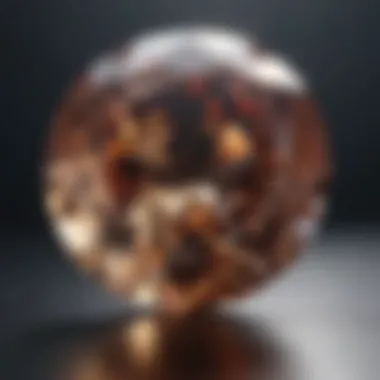
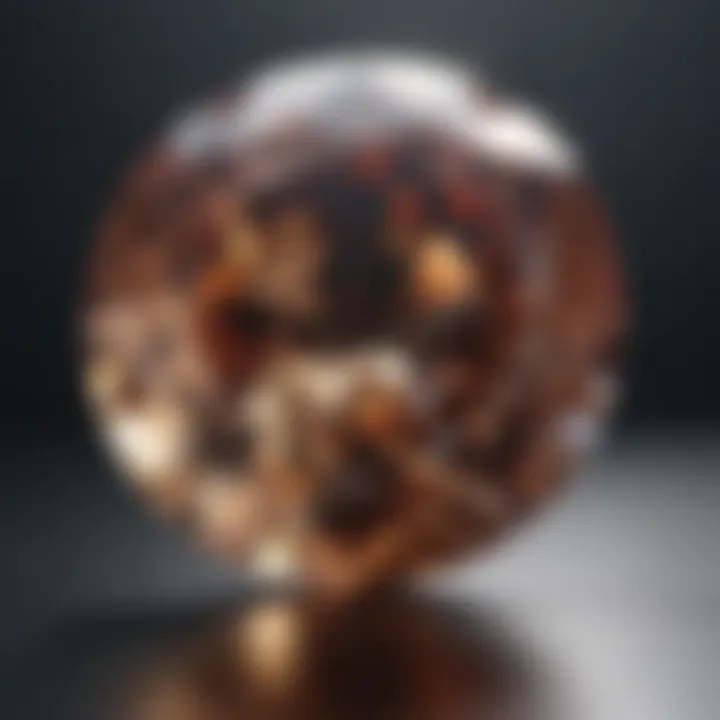
Intro
When it comes to diamonds, the term VS stands out. It signifies a clarity grade that connoisseurs, collectors, and those simply captivated by these gemstones often pay close attention to. So, what exactly does this grading mean? And, more importantly, why should it matter to both prospective buyers and seasoned investors?
This section aims to peel back the layers of diamond clarity grading, focusing on the VS category, which stands for "Very Slightly Included." A diamond rated as VS contains minor inclusions that are difficult to detect without magnification. While they may not be visible to the untrained eye, these inclusions can significantly impact a diamond's overall value and appeal. Understanding this grading can mean the difference between selecting a stunning piece of jewelry or inadvertently settling for something less desirable.
The intricacies of this grading system pave the way for a richer appreciation of diamonds. In the forthcoming sections, we will traverse various aspects of diamond grading and shed light on how it hinges not just on aesthetics but also on investment potential.
Key Points of Discussion:
- What VS grading entails: Learn the finer nuances of "Very Slightly Included" and its implications.
- Clarity scales: Compare and contrast between VS and other clarity ratings.
- Value implications: Understand how clarity affects the market and perceived worth of diamonds.
- Advice for buyers and collectors: Practical insights into purchasing diamonds within the VS category.
Exploring the realm of diamond clarity will set the stage for deeper insights into the jewelry landscape, where every facet counts, quite literally. Let's delve into the Gemstone Overview.
The Fundamentals of Diamond Grading
Understanding the fundamentals of diamond grading is paramount for anyone looking to acquire a high-quality gem. The journey to selecting the perfect diamond begins with grasping how these stunning stones are assessed. A diamond's quality, which directly influences its price and desirability, is determined through a series of established criteria and standards. This foundation not only helps potential buyers make informed choices but also empowers them to appreciate the beauty and rarity of the gemstones they consider.
Preamble to Gemological Standards
Gemological standards serve as the backbone of diamond grading. They provide a uniform system that ensures consistency and reliability in evaluating diamonds. Essentially, these standards allow buyers and sellers to communicate effectively about the quality and attributes of a stone. The Gemological Institute of America (GIA) and the American Gem Society (AGS) are among the most recognized organizations that set these benchmarks. Their grading systems use a scientifically supported approach, meaning each diamond is scrutinized with expertise and precision.
Such rigorous standards are vital as they bring clarity to a market that can often be overwhelming for novices. Imagine walking into a jewelry store and being bombarded with terms and numbers you don’t quite understand. With established gemological standards in place, the fog of confusion starts to lift, allowing consumers to make educated selections that suit both their aesthetic desires and budgetary constraints.
The Four Cs: Clarity, Cut, Color, Carat
Diving deep into diamond grading leads us to the famed "Four Cs": clarity, cut, color, and carat weight. Each of these characteristics plays an essential role in determining a diamond's overall quality and, thus, its value.
- Clarity refers to the presence of inclusions or blemishes within or on the surface of the diamond. A diamond with fewer of these imperfections is generally considered more valuable.
- Cut indicates how well the diamond has been shaped and faceted. The cut affects not only the aesthetics but also the diamond's sparkle and brilliance.
- Color assesses how colorless or colored the diamond is, with completely colorless stones being rarer and hence typically more desirable.
- Carat measures the diamond's weight, which is a significant factor in pricing, with larger diamonds usually commanding higher prices.
By breaking down a diamond’s attributes into these four categories, both novice buyers and seasoned collectors can navigate the often confused marketplace with a clearer understanding.
"The Four Cs are essential tools for both novice and seasoned buyers. Understanding them can change your whole perspective on what makes a diamond special."
The interplay among the Four Cs illustrates that diamond grading is not a mere checklist. Rather, it is a nuanced understanding of how each element affects the overall beauty and investment potential of the diamond. Knowing the intricacies involved helps collectors make decisions based not only on the metrics but on personal taste and investment strategies.
Defining Clarity in Diamonds
Clarity in diamonds is not just a technical jargon but a fundamental aspect that defines the quality and beauty of these precious stones. For anyone stepping into the world of diamonds, comprehending clarity is key. It goes beyond mere aesthetics; clarity reflects the diamond's overall integrity, which directly influences its market value. A higher clarity grade generally means the diamond will have fewer inclusions and blemishes, thereby rendering a more vivid sparkle.
Understanding clarity sets the stage for evaluating diamonds effectively, whether you're purchasing for personal use or as an investment. This section simplifies the complex terminology that often cloud the clarity conversation while still honoring its significance in diamond grading. Each element within clarity sheds light not only on the physical properties of a diamond but also connects to the emotional and cultural value we associate with these exquisite gems.
What is Diamond Clarity?
Diamond clarity refers to the presence of internal or external flaws, also known as inclusions and blemishes. These imperfections can arise during the diamond's formation process and can vary significantly in size, nature, position, and visibility.
There are several clarity grades defined by gemological standards, which range from Flawless to Included. A Flawless diamond bears no visible imperfections when viewed under 10x magnification, making it especially rare and valuable. Conversely, diamonds graded as Included have noticeable flaws that can impact their appearance and durability.
Key points to consider:
- Inclusions: Internal particles such as air bubbles or other minerals.
- Blemishes: Surface imperfections like scratches or nicks.
- GIA Grading System: Utilizes a scale from Flawless (F) to Included (I1-I3).
When a diamond is graded, these factors are meticulously evaluated, allowing buyers to understand what they are purchasing beyond the price tag.
The Impact of Clarity on Value
Clarity plays a pivotal role in determining the value of a diamond. A diamond’s worth often hinges on its clarity grade, with higher-rated gems fetching astronomical prices due to their rarity and beauty.
Here are a few critical impacts to take note of:
- Market Demand: As diamonds with higher clarity grades are rarer, they typically attract more buyers willing to invest.
- Beauty and Brilliance: Fewer inclusions mean the diamond can reflect light more effectively, enhancing its sparkle.
- Rarity: The higher the clarity, the less likely it is for the diamond to have visible flaws, making it a sought-after choice.
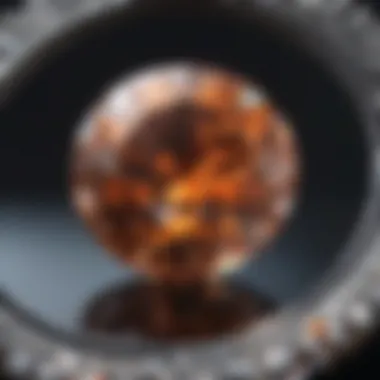
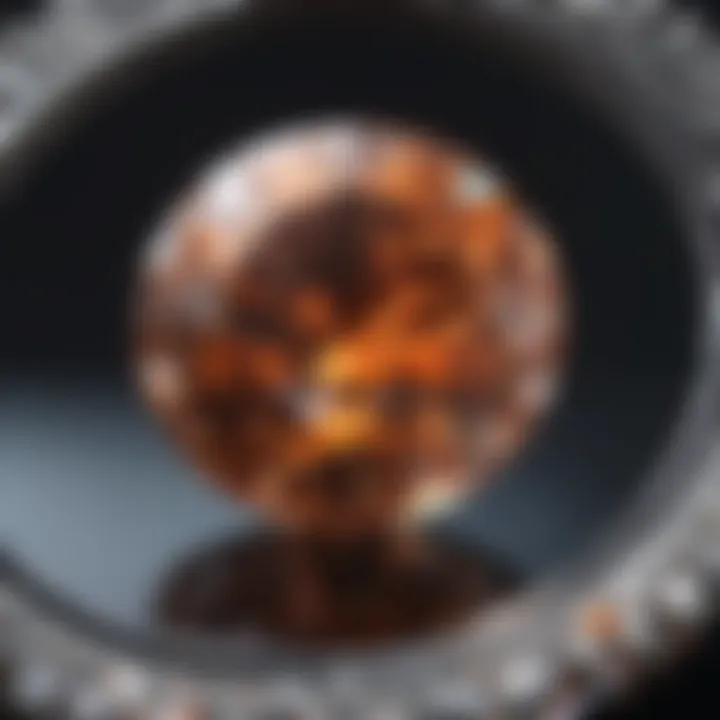
"In the world of diamonds, clarity is both a measure of beauty and a key determinant of value."
When making a purchase, it's essential to factor clarity into your overall decision-making process. Higher clarity often translates to better durability, as inclusions can sometimes weaken a diamond's structure. Additionally, investors and collectors should recognize that over time, the value of high-clarity diamonds tends to appreciate, especially if they possess desirable attributes like shape and cut.
Understanding VS in Diamonds
When you think about diamonds, particularly regarding their clarity, the abbreviation 'VS' often pops up. This term holds significant weight in the diamond grading system, helping both buyers and sellers assess values and quality. Clarity, one of the Four Cs of diamonds, determines how clean or blemished a stone appears. VS stands for "Very Slightly Included" and is a crucial category that communicates just how clear a diamond can be, influencing both its aesthetic appeal and overall market price.
Understanding VS diamonds is particularly beneficial as it strikes a balance between visibility of inclusions and value. For many collectors or shoppers, it represents a sweet spot: diamonds are still relatively affordable yet retain substantial visual appeal—making them a popular choice among both enthusiasts and those considering their first purchase.
The Meaning of VS
The term "Very Slightly Included" indicates that while a diamond may contain small imperfections, they are generally not visible to the naked eye. Under magnification, however, inclusions can be observed. This grading essentially means that the characteristics present in the diamond do not detract significantly from its beauty.
Inclusions refer to internal flaws, while blemishes relate to surface imperfections. In a VS diamond, these features are too minute to notice without a jeweler's loupe or microscope. A common analogy would be spotting a flyspeck on a painting from several feet away; while it might slightly alter perception, it doesn’t change the broader impact or beauty of the artwork. Here, the diamond's clarity plays a critical role in its overall visual charm.
Differentiating Between VS1 and VS2
Not all VS diamonds are created equal. The grading is further stratified into two distinct categories: VS1 and VS2. In a nutshell, these grades indicate the size, number, and visibility of inclusions present.
- VS1: This grade signifies that the diamond has fewer inclusions that are smaller and less noticeable compared to VS2. A VS1 diamond, when viewed under 10x magnification, may reveal a few pinpoint-sized inclusions but remains virtually perfect to the naked eye.
- VS2: On the other hand, a VS2 diamond may have slightly more inclusions that are visible under magnification, although they still do not distract from the diamond's overall beauty when it is viewed in normal usage conditions.
Ultimately, the grading between VS1 and VS2 will influence both appearance and price. In many markets, VS1 commands a higher price due to its superior clarity, while VS2 offers a more budget-friendly option that still maintains its regal elegance. The careful evaluation of these distinctions can lead to smarter choices, especially for collectors or prospective buyers looking to invest in a timeless piece.
Understanding the nuances between VS grades can ultimately save you money while still giving you a beautiful diamond that meets your standards.
Characteristics of VS Diamonds
In the realm of diamond grading, understanding the characteristics of VS diamonds is not just about aesthetics; it dives deeper into the very fabric of a diamond's identity. The term "VS," or "Very Slightly Included," signifies a level of clarity that sits comfortably between the unblemished heights of VVS and the more flawed spectrum of SI. This classification plays a pivotal role, especially for those seeking a balance between beauty and value in their gemstones.
Inclusions and Blemishes
When speaking of inclusions and blemishes in diamonds rated at VS, one must grasp what sets these stones apart. Inclusions are internal flaws, such as tiny crystals or minerals trapped during the diamond's formation. Blemishes, on the other hand, are external imperfections, like scratches or nicks. For VS diamonds, any such imperfections are typically minor and difficult to detect without magnification.
- Types of Inclusions: These may include feathers, crystals, clouds, and needle-like structures. While not visible to the naked eye, they can give a diamond's character.
- Common Blemishes: These can range from minor scratches on the pavilion (the bottom part of the diamond) to small chips on the girdle (the outer edge).
The very fact that these diamonds show inclusions means they possess a distinct history. Each VS diamond tells a unique story of its journey to the earth's surface. Buyers may find comfort in knowing that even these stones, with their mild inclusions, often possess a dazzling clarity that reflects light beautifully.
"Even slight inclusions in a diamond can add character, giving it a unique narrative that enhances its beauty."
Visibility Under Magnification
Examining a VS diamond under magnification is where the ‘aha’ moments often sparkle—quite literally. With a jeweler’s loupe or a microscope, one can discern the extent of inclusions and blemishes present in the diamond. Generally, for VS diamonds:
- VS1: Inclusions are difficult to see under 10x magnification. These diamonds are almost flawless to the casual observer.
- VS2: While still slightly included, the flaws may become noticeable under magnification but still remain hidden to the untrained eye.
This level of scrutiny provides not only a scientific perspective but also a personal connection to the diamond. Understanding how these minuscule imperfections come together can deepen one’s appreciation of the stone’s clarity and overall aesthetic.
Moreover, this clarity grade often serves as a benchmark in the diamond world. Many collectors and enthusiasts find that VS diamonds strike a harmonious chord between visual performance and value retention. Thus, investing in a VS diamond often assures that the piece will age gracefully, both in beauty and worth.
In summary, the characteristics of VS diamonds blend together to offer a unique fusion of beauty and individual history. Recognizing these elements is essential for anyone delving into the diamond market, making informed decisions possible.
Comparing VS to Other Clarity Grades
When it comes to understanding diamond grading, it's essential to contrast various clarity grades, particularly the ‘VS’ rating. The clarity of a diamond not only speaks to its visual appeal but also affects its market value significantly. By examining how VS compares to other grades like SI (Slightly Included) and VVS (Very Very Slightly Included), we can gain deeper insights into what consumers can expect in terms of quality and price.
VS vs. SI Diamonds
The distinction between VS and SI diamonds is crucial for potential buyers. VS diamonds, characterized by minor inclusions that are difficult to detect even under magnification, offer a high-quality appearance. On the other hand, SI diamonds can present inclusions that are more easily visible to the naked eye.
- Quality Perception: A VS diamond often appeals more to those seeking a blend of beauty and cost-effectiveness. In contrast, SI diamonds tend to be more budget-friendly but may compromise the visual experience.
- Investment Consideration: VS diamonds generally hold their value better over time compared to SI diamonds. The rarity of the clarity in VS diamonds makes them a more stable investment.
For gem enthusiasts, choosing between these grades often hinges on personal preference and budget. While SI may be a practical option for some, those who aim for a more splendid sparkle may gravitate toward the VS category.
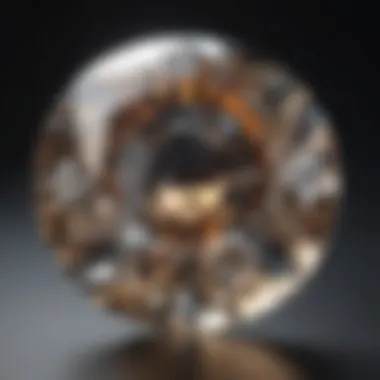
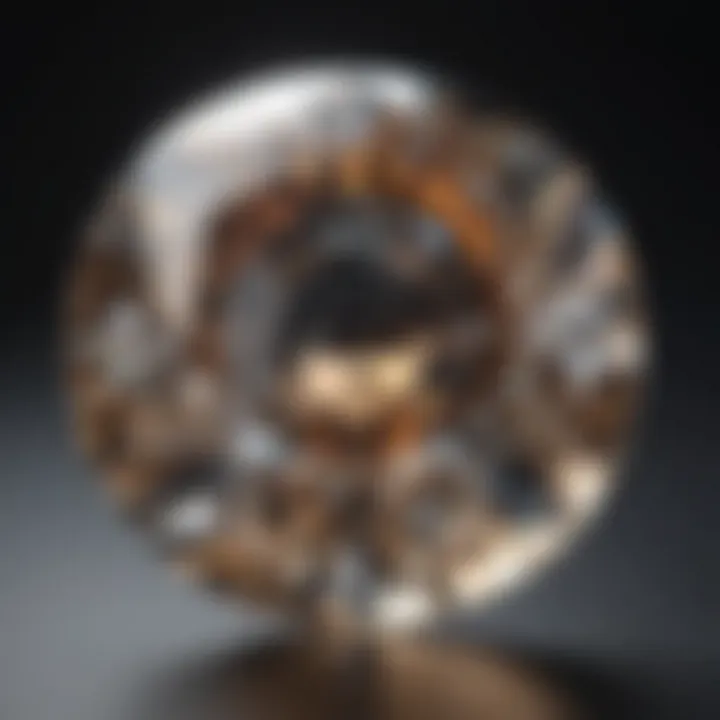
VS vs. VVS Diamonds
Moving up the clarity scale, we reach VVS diamonds, which, as the name suggests, contain very minute inclusions that require high magnification to even identify. The differences between VS and VVS can be subtle yet significant:
- Visual Appeal: VVS diamonds are the crème de la crème, often sought after by connoisseurs for their unmatched clarity. However, to the untrained eye, a VS diamond can appear nearly as flawless, which is why many folks opt for VS in terms of value.
- Cost Difference: VVS diamonds command higher prices, simply due to their rarity. A buyer choosing between the two must weigh whether the small incremental clarity improvement in VVS justifies the price hike.
In summary, while both VS and VVS diamonds captivate with their brilliance, the choice often depends on individual preferences and financial considerations.
Key Takeaway: Understanding these distinctions helps inform smarter purchasing decisions, especially for individuals looking to invest in diamonds as long-term assets.
As we navigate this intricate jewelry world, it’s rather easy to get dazed by the technical jargon. But with this clarity—pun intended—buyers will make educated choices, whether opting for the budget-friendly SI or the elevated brilliance of VVS.
The End
In the grand scheme, comparing VS to other clarity grades reveals not just the physical differences in clarity but also influences aesthetic value and market trends. By grasping these comparisons, collectors and enthusiasts can better appreciate what they’re purchasing, allowing for a more enriching diamond experience.
The Role of Certification in Diamond Grade Verification
When it comes to the intricate world of diamonds, ensuring authenticity and quality is paramount. The role of certification in diamond grade verification isn’t just a formality; it’s a crucial element that provides buyers with peace of mind. When a diamond carries a certification from a recognized gemological laboratory, it is stamped with credibility. This helps buyers distinguish between stones that are truly top-shelf and those that might be lacking in quality, thus safeguarding against being misled in an often complex marketplace.
Certification serves multiple purposes. Firstly, it acts as an objective third-party assessment, giving clarity not only on the grading of the diamond but also on its overall characteristics. A well-done certification can provide invaluable information such as clarity, carat weight, cut grade, and even hints about history or origin. Without such certification, buyers are essentially flying blind, relying solely on the seller’s claims, which can sometimes be dubious at best.
Moreover, the certification also influences the diamond's resale value. In a transparent market, a diamond backed by reputable lab verification typically retains value better than one without. Therefore, understanding the certification process is an essential aspect of savvy diamond investment.
"A certified diamond is like a ship with a strong anchor; it holds its place in the stormy seas of the diamond market."
Recognized Gemological Laboratories
Navigating through various certifications can feel like wandering through a maze, given the number of gemological laboratories each boasting different standards. However, some laboratories have earned a stellar reputation in the diamond industry, and their certifications are widely respected. Institutions like the Gemological Institute of America (GIA) and the International Gemological Institute (IGI) stand out due to their rigorous grading practices and educational resources for both consumers and professionals alike.
Each of these institutions employs trained gemologists who analyze diamonds under controlled conditions. These experts perform tests for clarity, cut, color, and carat weight, among other qualities, culminating in a detailed grading report. This report serves not only as a grading record but also as a lifelong guarantee of the diamond's reported attributes. Having a diamond certified by a recognized laboratory means you have a document that holds significant weight, particularly during resale discussions.
The process of certifying a diamond can take time and sometimes comes with a fee, but when considering the potential value loss from neglecting this step, the cost becomes trivial in the grand scheme.
Interpreting Diamond Grading Reports
Upon receiving a diamond grading report, reading it can be like deciphering a foreign language if you are not familiar with the terms. A standard grading report typically includes several sections that detail the diamond’s attributes, each contributing to the overall evaluation. These sections will likely include:
- Grading Summary: This gives an at-a-glance view of the diamond’s grade for the Four Cs—cut, color, clarity, and carat weight.
- Detailed Descriptions: These sections break down the specific qualities of the diamond, providing minute details on visible inclusions, the nature of the cut, and any additional features that may influence its desirability.
- Photographs or Diagrams: Some reports include imagery to showcase the diamond’s specific traits, helping buyers visualize what they are purchasing.
Understanding how to read these aspects can empower buyers when making their choices. Knowledge is power; knowing what to look for can prevent oversights that could affect both enjoyment and investment down the line. Overall, verifying a diamond’s authenticity through certified grading not only enhances trust in the purchase but also adds a layer to its financial security.
Factors Influencing the Price of VS Diamonds
When examining the pricing landscape of VS diamonds, several factors come into play that significantly influence their market value. Understanding these elements is essential for both potential buyers and collectors, as it equips them with the knowledge necessary to make informed decisions in a competitive market. The most crucial factors include market demand, quality, and rarity.
Market Demand for Diamonds
Market demand plays a pivotal role in the pricing of VS diamonds. When the appetite for luxury goods surges, as often seen during festive seasons or significant life events like engagements, the prices reflect this increased demand. Here’s how market demand manifests:
- Consumer Trends: Different styles or trends in jewelry can instigate a sudden rise in demand for specific diamond qualities, including VS diamonds. If a celebrity showcases a striking VS diamond ring, it’s likely to spark interest and increase demand as consumers seek similar styles.
- Economic Influence: In times of economic prosperity, consumers are more inclined to splurge on high-value items, boosting the demand. Conversely, in economic downturns, luxury items, including diamonds, might see a dip in demand, affecting their prices.
- Investment Considerations: With growing awareness about gemstones as alternative investments, more individuals are exploring diamonds, particularly VS clarity grades. This shift can stimulate demand, impacting prices positively.
As noted by gemologists, "the worth of a diamond is not only defined by its inherent qualities but also by how it is perceived in the marketplace."
Quality vs. Rarity
There’s an ongoing balance between quality and rarity that influences the price of VS diamonds. A diamond's clarity is just part of the picture; its overall quality encompasses various aspects. Here�’s a closer look:
- Clarity and Quality: VS diamonds are renowned for their clarity, possessing only minor inclusions detectable under magnification. This quality naturally positions them at a higher price point compared to lower clarity grades like SI. Buyers often see the value in this quality, which translates to willingness to invest more.
- Rarity: While quality matters significantly, the rarity of certain diamonds can drastically affect their prices. A VS diamond with a unique color or cut may command a premium simply based on how rare it is in the market. The interplay between a diamond’s clarity and its uniqueness can create a niche demand, resulting in higher value.
- Competitiveness in the Market: As the diamond industry evolves, factors like innovations in mining and synthetic diamonds can influence real diamonds’ rarity perceptions and subsequently their prices. A scarcity in high-quality, natural diamonds can elevate their appeal and pricing, especially when contrasted against lab-created options.
Buying Considerations for VS Diamonds
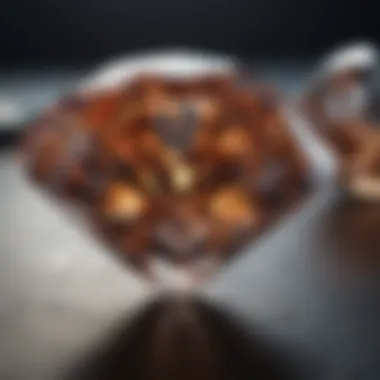
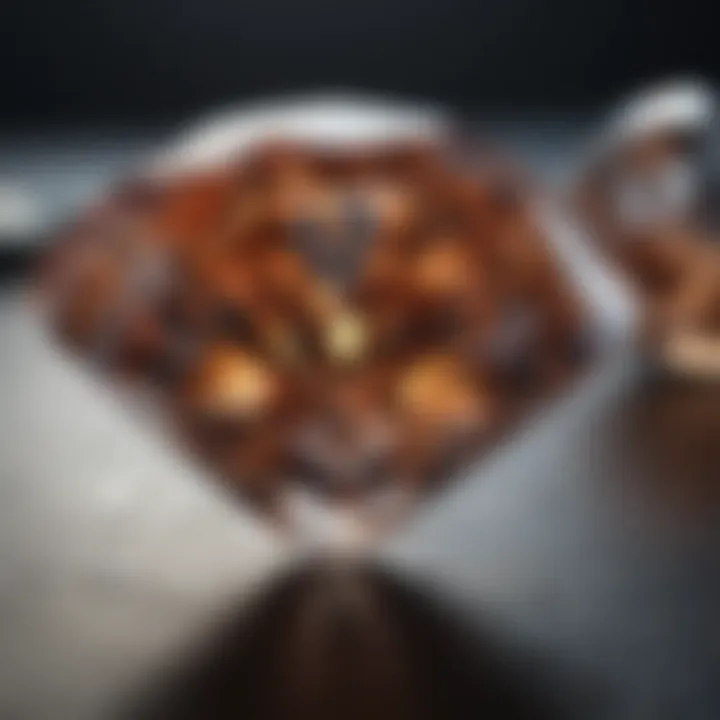
When it comes to acquiring VS diamonds, understanding your own requirements and the market landscape can significantly ease the process. Each diamond isn't merely a pretty stone; it embodies individual preferences and values. Hence, the benefits of buying a VS diamond extend beyond its immediate appearance.
Assessing Your Needs and Preferences
Before diving into the buying process, take a moment and reflect on what you really want from your diamond investment. It's kinda like finding the right flavor of ice cream; everybody has their unique taste. Here are some aspects to consider while evaluating your needs:
- Purpose: Are you purchasing for an engagement ring, a birthday gift, or perhaps as an investment? The reason influences the type of diamond you should seek.
- Style preferences: Everyone has their aesthetic. Do you fancy a classic solitaire, or are you drawn to intricate halo settings? Knowing your desired style narrows down options.
- Budget: Establishing a realistic budget is crucial. A VS diamond may come at a premium, but considering factors like carat weight and cut can help in balancing what you want versus what you can afford.
Reflecting on these elements could aid buyers in making a calculated decision that aligns with personal or gifting needs.
Trusted Retailers and Sellers
Now that you've got an idea of what you need, it becomes essential to choose where you’ll purchase your diamond. The place you buy from can make all the difference in your overall experience. Not every store, online or physical, follows the same set of practices, so being diligent will pay off. Consider the following:
- Reputation: Always look for reviews and recommendations. Previous buyers’ experiences often reveal a lot about the retailer’s authenticity and the quality of diamonds they're selling.
- Certification: Ensure the diamond comes with a reputable grading report from recognized gemological labs. A diamond without a credible certification could be a headache in the long run.
- Customer Service: Pay attention to the quality of service offered. Good communication and knowledgeable staff reflect a retailer’s commitment to your satisfaction.
Here’s a key takeaway: purchasing a VS diamond isn’t just a transaction; it’s about forming a relationship with a brand you can trust. This will not only enhance your buying experience but also provide peace of mind long after your purchase.
Caring for Your VS Diamonds
Caring for your VS diamonds is not just about keeping them shiny; it's about preserving their value and integrity over time. Given their clarity rating, which suggests a high level of purity, these gems require special attention to maintain their stunning appearance. Proper care helps minimize wear and tear, thereby ensuring that your investment remains as dazzling as the day you acquired it.
Cleaning and Maintenance Tips
Regular cleaning is pivotal for sustaining the brilliance of your VS diamonds. Dust, oils, and other residues can dull their sparkle, diminishing their value. Here are some practical tips for cleaning:
- Gentle Cleaning Solution: Mix a few drops of mild dish soap with warm water. Avoid any harsh chemicals or abrasive cleaners, as they can scratch the diamond's surface.
- Soaking: Allow your diamond to soak for about 20 to 30 minutes. This will help loosen any dirt and grime.
- Soft Brush: Use a soft toothbrush or a similar brush to gently scrub the diamond. Pay extra attention to the space beneath the stone, where dust tends to gather.
- Rinse and Dry: Rinse the diamond thoroughly under running water to remove any soap residue. Dry it with a lint-free cloth for a sparkling finish.
"Regular maintenance not only reveals a diamond's natural brilliance but also prolongs its lifespan."
In addition to cleaning, it’s wise to periodically check the settings of your VS diamond. Loose prongs can lead to the loss of the stone, which would be a financial and emotional blow. Schedule a professional inspection at least once a year to ensure everything is secure.
Storage Recommendations
Proper storage is equally important for your VS diamonds. The way you store them impacts their physical condition and overall appearance. Here are some tips to keep your gems safe:
- Individual Storage: Keep each diamond in its own soft pouch or a separate compartment in a jewelry box. This helps to prevent scratches that can occur from contact with other pieces.
- Avoid Direct Sunlight: Store your VS diamonds away from prolonged exposure to sunlight, as ultraviolet rays can affect the materials used in the diamond's setting, potentially compromising its integrity.
- Controlled Environment: A climate-controlled space is ideal. Extreme temperatures and humidity can lead to unwanted damage.
- Security Concerns: If your collection includes particularly valuable pieces, consider using a safe or a safety deposit box for added protection. This precaution not only safeguards against theft but also offers peace of mind.
By integrating these cleaning and storage practices into your routine, you can protect the gem's beauty and value for many years. Remember, a little care goes a long way in ensuring that your precious VS diamonds withstand the tests of time.
Investment Potential of VS Diamonds
When considering the world of diamond investment, the grading of a diamond plays a crucial role. Within this grading system, VS diamonds—those categorized as "Very Slightly Included"—represent a substantial opportunity for investors. They strike a unique balance, offering an appealing blend of quality and affordability. Their increasing value over time makes them noteworthy in conversations about gemstone investment, particularly as diamond prices can fluctuate based on a range of factors.
Investing in VS diamonds can yield multiple benefits:
- Aesthetic Appeal: VS diamonds boast inclusions that are difficult to see even under magnification, allowing them to deliver a stunning visual impact comparable to more expensive grades.
- Affordability: Compared to VVS (Very Very Slightly Included) diamonds, VS diamonds often come with a lower price tag, which can make them an attractive option for buyers who seek quality without breaking the bank.
- Resale Value: As demand for diamonds remains steady, VS diamonds often retain their value well, with potential for appreciation over time, making them a stable addition to an investment portfolio.
Understanding the intricacies of long-term value and market trends further enriches one’s perspective on VS diamonds, positioning them as a compelling candidate for both novices and experienced investors alike.
Long-term Value Considerations
When we talk about the long-term value of VS diamonds, several aspects come into play. First, it’s important to consider the diamond’s rarity. Diamonds, in general, are finite resources. Over time, as higher quality stones become more rare, the demand for diamonds graded lower but still within the realm of beauty and quality—like VS—will likely remain strong.
Also, trends in consumer preferences suggest that buyers are becoming more educated and value-conscious. Today’s consumers often search for quality gems that are not out of reach financially. This trend contributes to increasing interest in VS diamonds, especially when marketed effectively.
Furthermore, certain factors contribute to rising values:
- Quality over Quantity: Shifts in market preferences highlight a growing inclination toward well-graded diamonds instead of just bigger stones.
- Resale Opportunities: If market conditions are favorable, owners of VS diamonds may find excellent opportunities to resell their stones at a value that exceeds the original purchase price.
"A well-maintained VS diamond can appreciate in value, offering both beauty and a financial advantage."
Market Trends for VS Diamonds
The buzz surrounding VS diamonds has been gaining momentum, driven primarily by changing consumer behavior and broader economic trends. As jewelry enthusiasts become more aware of the benefits offered by slightly included diamonds, interest swells. Market trends reveal that many buyers today prefer investing in quality stones without extravagance. Here are a few noteworthy points regarding current market dynamics:
- Supply and Demand: The market for diamonds is cyclical, often driven by economic conditions. However, VS diamonds have shown resilience, maintaining consistent demand among consumers looking for fine jewelry that won’t drain their wallets.
- Ethical Sourcing: Today’s buyers demand transparency about how diamonds are sourced. Retailers promoting ethically mined VS diamonds are particularly appealing, making these stones a more attractive investment.
- Online Sales Boom: The increase of online commerce has also made it easier to reach broader markets. Many buyers feel more confident purchasing these diamonds online, confident in certification and availability of quality images.
On the whole, understanding the market for VS diamonds is vital. These subtle gems may not be as flashy as their flawless counterparts, but they offer a combination of quality, affordability, and investment potential that savvy buyers are beginning to appreciate more and more.







